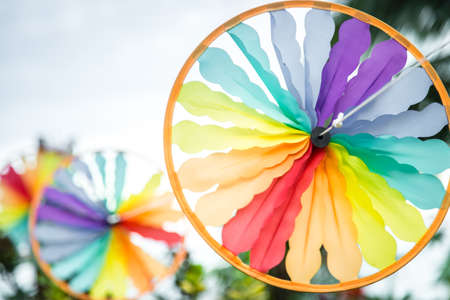Introduction to Feng Shui and Colour Theory
Feng Shui, an ancient Chinese art and science, has long guided people in harmonising their living spaces with the natural world. At its heart, Feng Shui seeks to balance the flow of energy—known as qi—through careful arrangement of objects, orientation, and, crucially, the use of colour. Each hue is thought to possess unique qualities that influence mood, wellbeing, and fortune. While traditional Feng Shui colour theory is rooted in Eastern philosophies, its universal appeal has encouraged reinterpretation across cultures. In Britain, where interior design often reflects a blend of heritage and contemporary tastes, the impact of colour takes on new nuances. Exploring the fundamentals of Feng Shui with a particular focus on the significance of colour sets the stage for understanding how these principles might be thoughtfully adapted to suit British preferences for calm and clarity in their homes and workplaces.
Historic and Contemporary British Colour Preferences
The evolution of colour preferences in Britain offers a fascinating insight into how cultural sensibilities shape our living spaces. Traditionally, British interiors have favoured muted, understated palettes that evoke a sense of heritage and restraint. Classic Georgian and Victorian homes, for example, often featured rich yet subdued hues such as deep greens, stately blues, and earthy ochres—tones that reflected both the natural landscape and the refined tastes of the era. These colours imbued homes with a sense of stability and calm, aligning well with Feng Shui’s emphasis on harmony and balance.
However, as British society has modernised, so too have attitudes towards colour in interior design. In recent decades, there has been a discernible shift towards lighter, airier shades that promote clarity and tranquillity. Soft greys, gentle whites, and pastel tones are now commonly chosen for their ability to create a spacious and serene environment—an effect highly valued in today’s often compact urban homes. This contemporary preference mirrors a collective desire for calm amidst the bustle of modern life, while still nodding to Britain’s longstanding appreciation for subtle elegance.
Comparison of Traditional and Modern British Colour Palettes
| Period | Typical Colours | Associated Atmosphere |
|---|---|---|
| Georgian/Victorian Era | Deep green, navy blue, burgundy, ochre | Warmth, richness, groundedness |
| Modern British Homes | Pale grey, off-white, pastel blue, sage green | Lightness, clarity, calm |
The Shift Towards Calm and Clarity
This transition is not merely aesthetic but deeply psychological. The embrace of softer colours reflects a growing awareness of wellbeing within the home—a principle at the heart of both Feng Shui and contemporary British design philosophies. As preferences evolve, the interplay between tradition and innovation continues to define how Britons use colour to cultivate spaces that feel both timeless and refreshingly clear.

3. Calm and Clarity: The British Aesthetic
When examining the essence of calm and clarity within British design, one uncovers a tradition that quietly celebrates restraint, subtlety, and a harmonious balance between past and present. These values are not mere abstractions; they are woven into the very fabric of British interiors, workspaces, and daily environments through considered colour choices.
The Meaning of Calm in British Design
For the British, calm is less about absence and more about presence—a mindful curation of space that invites tranquillity without feeling sterile or austere. This is often achieved through muted palettes: soft greys reminiscent of misty mornings, sage greens echoing rolling hills, and gentle blues evoking coastal skies. Such hues foster a sense of ease, subtly drawing on both the natural landscape and centuries-old architectural traditions to create an environment where relaxation feels intuitive.
Clarity as Functional Elegance
Clarity in the British context speaks to a quiet confidence in design: spaces are organised with purpose, yet never overbearing. Colours such as crisp whites or understated creams provide a clean backdrop for daily life, allowing architectural features or cherished heirlooms to shine without distraction. In offices and communal spaces, clarity emerges in decluttered layouts complemented by soothing colour schemes—sage, dove grey, or powder blue—designed to promote focus and mental wellbeing.
Expressing Calm and Clarity Through Colour Choices
The British approach to expressing calm and clarity through colour favours timelessness over trends. Rather than bold statements, there is a predilection for shades that age gracefully: stone, oatmeal, duck egg, or olive. These colours act as visual anchors, grounding interiors in serenity while allowing for personal touches—be it a splash of deep navy or a hint of plum—to add depth without disrupting harmony.
Everyday Life: Subtlety Over Showiness
This preference extends beyond private homes into public life. Cafés might feature walls in chalky tones; workplaces opt for restorative palettes rather than energetic bursts. Even during festive occasions, tablescapes lean towards classic combinations—ivory linens paired with sprigs of rosemary or eucalyptus—reflecting an enduring love for subtle beauty over overt display.
In essence, British preferences for calm and clarity are rooted in cultural ideals of composure and order. By embracing colours that whisper rather than shout, interiors become sanctuaries where modern living finds peace amid tradition—a delicate equilibrium that continues to define the nation’s aesthetic sensibility.
4. The Feng Shui Approach to Selecting Colours
Feng Shui, an ancient Chinese practice, offers a nuanced approach to selecting colours that goes far beyond mere aesthetics. At its core, Feng Shui aligns colour choices with the energies of an environment and the specific needs of its inhabitants. In the context of British culture—where a preference for subtlety, calm, and clarity prevails—these principles can be thoughtfully adapted to create harmonious spaces that both soothe and inspire.
The Five Elements and Colour Selection
Central to Feng Shui is the concept of the Five Elements: Wood, Fire, Earth, Metal, and Water. Each element is associated with particular colours and qualities. When applied to British interiors, these associations help guide homeowners in choosing palettes that foster tranquillity and mental clarity.
| Element | Associated Colours | Effect on Mood | British Adaptation |
|---|---|---|---|
| Wood | Green, Blue | Growth, Calmness | Sage green walls or navy accents for restful living rooms |
| Fire | Red, Orange, Purple | Energy, Warmth | Burgundy cushions or terracotta décor for subtle vibrancy |
| Earth | Yellow, Beige, Brown | Stability, Comfort | Mushroom or oatmeal tones for serene bedrooms |
| Metal | White, Grey, Metallics | Clarity, Precision | Pale greys and crisp whites for modern kitchens or studies |
| Water | Black, Deep Blue | Calmness, Reflection | Charcoal features or deep blue accessories for contemplative spaces |
Tuning Colour Choices to Personal Needs
The British appreciation for understated elegance finds resonance in Feng Shui’s emphasis on personalisation. Rather than prescribing universal solutions, practitioners assess factors such as room orientation (north-facing rooms may benefit from warmer tones) and individual temperament. For those seeking calm after a busy day in London or Manchester’s grey drizzle, soft blues or muted greens offer sanctuary. Conversely, a home office might benefit from energising yet gentle touches of yellow or metallic hues to encourage focus without overwhelming the senses.
Cultivating Clarity Through Thoughtful Design
The interplay between light and colour is also central to achieving clarity. In Britain’s often overcast climate, lighter shades can amplify available natural light and prevent interiors from feeling oppressive. By harmonising colour choices with both environmental conditions and personal requirements—as advocated by Feng Shui—Britons can shape spaces that nurture well-being and support clear thinking.
5. Bridging Traditions: Integrating Feng Shui Colours with British Design
Bringing together the time-honoured wisdom of Feng Shui and the understated elegance of British interior design offers a unique opportunity to create spaces that are both harmonious and distinctly local. By thoughtfully integrating Feng Shui colours into British homes, one can achieve environments that nurture calm, clarity, and comfort without sacrificing style or tradition.
Understanding the Foundations
To begin, it is essential to appreciate the guiding principles behind both Feng Shui and British design. While Feng Shui focuses on balancing energies through colour and arrangement, British sensibilities lean towards subtlety, heritage, and practicality. The key lies in blending these philosophies so that each complements the other.
Practical Strategies for Harmonious Spaces
- Start with a Neutral Base: British interiors often favour neutral palettes—think soft greys, creams, and gentle whites. These shades provide an ideal backdrop for introducing Feng Shui elements. For instance, adding touches of green (symbolising growth) through plants or textiles can invigorate a living room without overwhelming its classic character.
- Incorporate Natural Materials: Traditional British design values natural materials like wood, wool, and stone. Pairing these with earthy tones from the Feng Shui palette enhances a sense of grounding and stability. Oak flooring or woollen throws in muted earth hues invite warmth and balance.
- Balance Light and Colour: Natural light is cherished in British homes. Use mirrors strategically—an accepted practice in both cultures—to reflect light and distribute energy evenly. Accentuate bright areas with splashes of blue or teal (associated with calmness in Feng Shui), echoing the tranquillity of English skies or coastal scenes.
- Personalise with Local Touches: Incorporate quintessentially British motifs—such as floral patterns or tartans—in cushions or curtains featuring recommended Feng Shui colours. This approach respects tradition while inviting positive energy into the space.
Example: A Calm Reading Nook
Imagine transforming a bay window alcove into a serene reading nook. Begin with pale dove grey walls (neutral base), add a woollen navy throw (water element for relaxation), and place a potted fern nearby (wood element for vitality). Finish with an antique brass lamp (metal element for clarity) to marry old-world charm with mindful design.
By weaving together ancient Chinese wisdom and quintessentially British aesthetics, homeowners can cultivate interiors that exude both peace and personality—a true testament to the art of harmonious living.
6. Conclusion: Embracing Colour for Wellbeing in British Homes
The harmonious fusion of Eastern Feng Shui philosophy and British cultural sensibilities offers a unique opportunity to reimagine our living spaces for enhanced wellbeing. By embracing mindful colour selection, British homeowners can cultivate environments that not only reflect their personal tastes but also promote calm, clarity, and balance. Through the lens of Feng Shui, colours are more than mere decoration—they are vital energies that shape our moods, productivity, and sense of comfort.
Within the context of Britain’s architectural heritage and ever-evolving interiors, choosing hues such as soft blues, gentle greens, and muted neutrals resonates with both the tranquillity often sought in traditional homes and the clarity favoured in modern design. These choices are not arbitrary; they echo the nation’s appreciation for understated elegance and connection to nature, while also drawing from centuries-old wisdom about harmony and flow.
As we reflect on this intersection between East and West, it becomes clear that thoughtful application of colour can bridge cultural values with individual needs. It is not simply about following trends or ancient guidelines blindly; rather, it is an invitation to engage with our surroundings intentionally. This mindful approach empowers us to create sanctuaries that support relaxation, focus, and emotional stability—qualities increasingly valued in today’s fast-paced world.
Ultimately, by understanding the impact of colour through both a philosophical and practical lens, British residents can transform their homes into spaces that nurture body and mind alike. Whether revitalising a Victorian terrace or refreshing a contemporary flat, integrating principles from Feng Shui into colour choices allows each household to tell its own story—one where tradition meets modernity in pursuit of everyday wellbeing.


